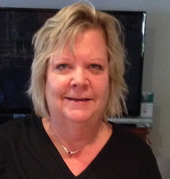 by Pat Ahaesy, CMP, CSEP Are you an event planner planning a program, and want to be sure that your attendees are engaged during the various sessions? Are you a presenter who wants to be sure that your audience is engaged?
Event planners and speakers want to engage their audiences, but the trick is how to engage effectively. Even the very best speakers may have a tough time keeping audience interest at times. No matter how important, fascinating or humorous the content is, audience interest waxes and wanes. What to do? Integrate an audience response system into the presentation. In addition to engaging your audience, an audience response system can be used as a research or survey tool. This is quite effective and results are obtained almost instantly. There are a plethora of companies and types of audience response systems out there, but the end result is being able to get the audience reaction/response to the content being delivered on stage, and adding another level to their engagement. Some of the systems consist of wireless keypads and use Wi-Fi to communicate, while others require an App on your phone . There are pluses and minuses to each. There more than likely is a technician on hand to assure that all works. The wireless units as well as the apps work with Wi-Fi, but you must be sure that you have enough bandwidth available in the room for serving the size audience you expect. One of the costs to be considered in this instance is the cost of Wi-Fi. This is vital as audience members will be very unhappy if they get knocked off the Wi-Fi. The Wi-Fi costs and negotiating those costs are another topic. When it comes to an App, the Pew Report says “64% of A merican adults now own a smartphone of some kind”. Make sure your audience is not part of the other 36% In the long run, whichever type that you choose, the most important thing is how you plan for them. The first question is, should you use a w ireless keypad or an app? This will depend on the outcomes desired, your audience and budget. Next is which of the short list of types of systems and vendors that you’ve created has the capabilities that you want and need. This is not a one size fits all situation. Then you need to come up with your questions. You can ask very simple questions with A or B answers, or slightly more complex questions with multiple choice answers. Key to getting true ROI from your system is preparing real questions that require real answers that will be useful to your audience, your speaker and to your company or association. Pat Ahaesy is the owner of P&V Enterprises is a Certified Woman Owned Business, certified by both the New York City Dept. of Small Business and New York State. We began as a business, producing corporate and non profit events in 1994. Our company has evolved over the years and in addition to planning, production and management we leverage technology, successfully managing online and on site event registration and successfully producing hybrid events and webcasts to extend the reach of an event. I am a CMP and CSEP as well as an instructor for the online Special Events Institute. I was the President of the NYC Chapter of NAWBO, and on the Board of the NYC Chapter of ISES as well as a Committee Chair for MPIGNY. Have something to say? Say it on The Chatter, SPiN members are invited to submit Blogs for publication in The Chatter. If you are interested send an email to [email protected]. Let us know what you want to blog about and we will contact you.
1 Comment
 by Kathie Niesen Pecha Kucha, what is it? It’s a presentation style that features 20 slides in 20 second increments that allows the speaker to paint a picture or tell a story. And the story is told in 6 minutes and 40 seconds. The slides are auto advanced so the presenter has no choice but to stay on time and on target.
Some benefits of Pecha Kucha are:
One speaker new to Pecha Kucha mentioned the impact that the style had him reconsidering the importance of each and every slide in his talk, a talk that he normally would have put together without much thought previously. Pecha Kucha speakers stress the importance of rehearsing their talk prior to the presentation. Those 20 minutes and 20 slides can fly by in an instant and while you may be on slide 19, your verbal content may still be on slide 9 which can be a disaster. Pecha Kucha nights are popular in cities all over the world. A typical Pecha Kucha Night (PKN) includes 8 to 14 presentations. In each presentation 20 slides are shown for 20 seconds each. PK is mainly being used in the design, architecture, photography, art and creative fields although more and more academics, scientific and medical organizations are incorporating it. So try Pecha Kucha at your next event. Kathie Niesen, CMP is the Owner of KMN Meetings and Events. She plans meetings of all sizes. Consulting services include instructional design, working with volunteers and faculty development. You can contact her at [email protected] Have something to say? Say it on The Chatter, SPiN members are invited to submit Blogs for publication in The Chatter. If you are interested send an email to [email protected]. Let us know what you want to blog about and we will contact you. |
Blog CoordinatorKathie Niesen, CMP Blog WritersMembers of SPiN Archives
April 2017
Categories |
- Home
- Our Partners
- About Us
-
Newsletter
- 06 June 2024 SPIN:News
- 05 May 2024 SPIN:News
- 04 April 2024 SPIN:News
- 03 March 2024 SPIN:News
- 06 June 2022 SPIN:News
- 04 April 2022 SPIN:News
- 03 March 2022 SPIN:News
- 01 January 2022 SPIN:News
- 11 November 2021 SPIN:News
- 06 June 2021 SPIN:News
- 05 May 2021 SPIN:News
- 04 April 2021 SPIN:News
- 03 March 2021 SPIN:News
- 02 February 2021 SPIN:News
- 01 January 2021 SPIN:News
- Join
SPIN:Senior Planners Industry Network
- Home
- Our Partners
- About Us
-
Newsletter
- 06 June 2024 SPIN:News
- 05 May 2024 SPIN:News
- 04 April 2024 SPIN:News
- 03 March 2024 SPIN:News
- 06 June 2022 SPIN:News
- 04 April 2022 SPIN:News
- 03 March 2022 SPIN:News
- 01 January 2022 SPIN:News
- 11 November 2021 SPIN:News
- 06 June 2021 SPIN:News
- 05 May 2021 SPIN:News
- 04 April 2021 SPIN:News
- 03 March 2021 SPIN:News
- 02 February 2021 SPIN:News
- 01 January 2021 SPIN:News
- Join


 RSS Feed
RSS Feed
